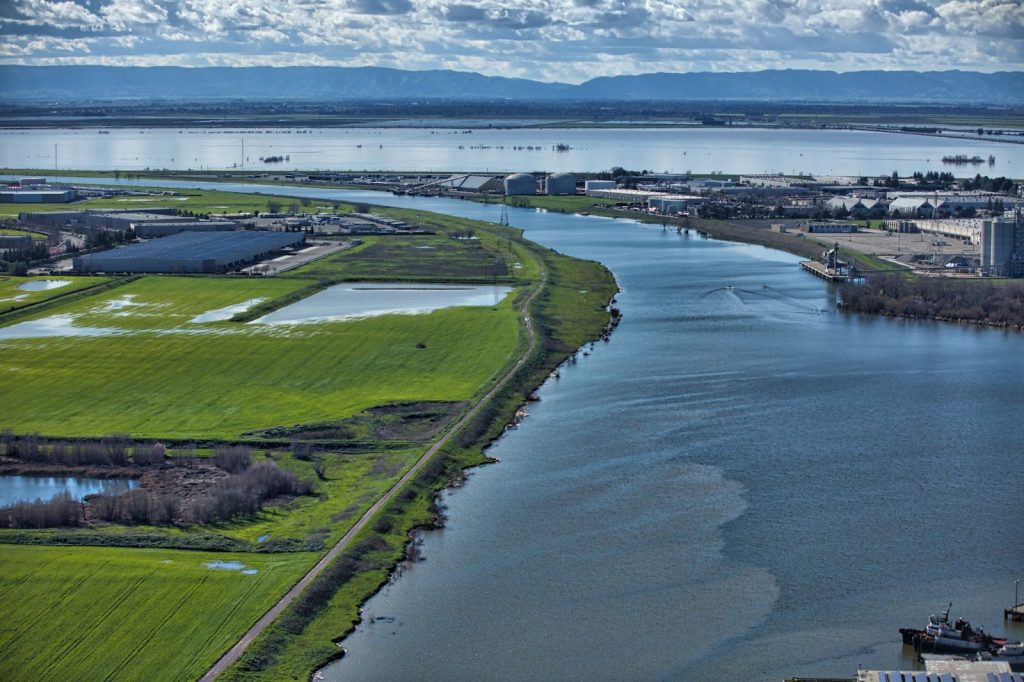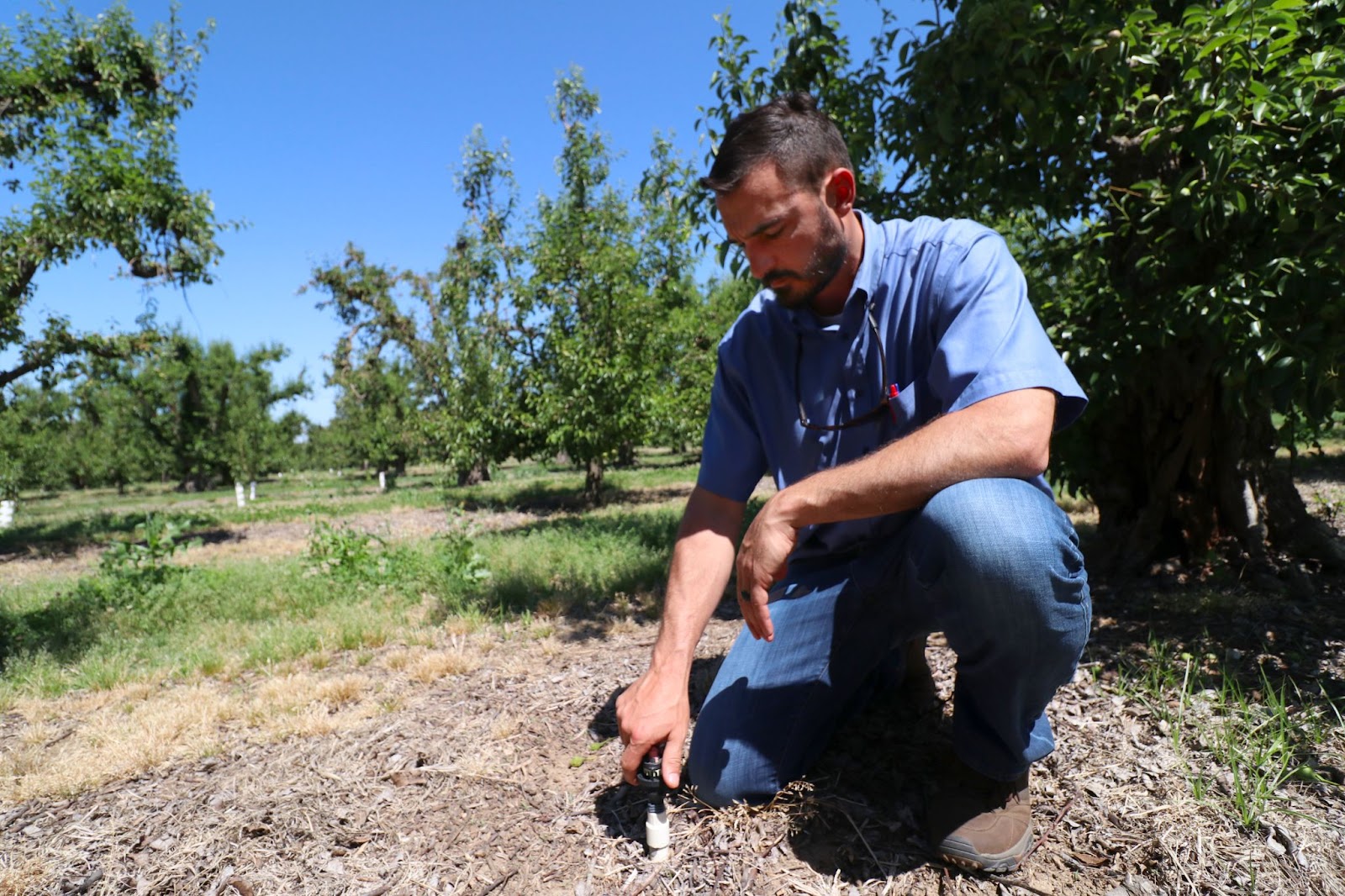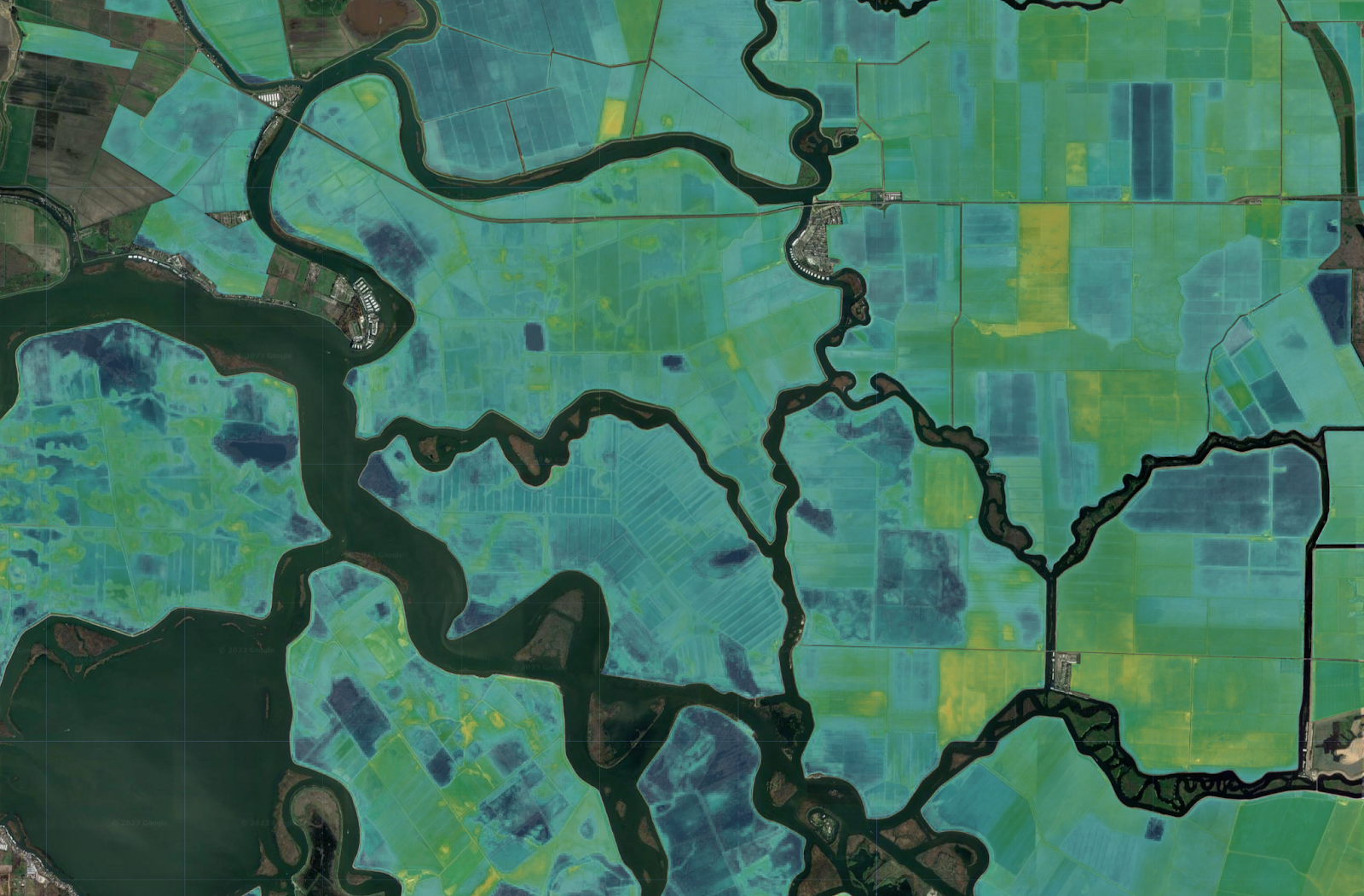This blog is co-authored by Will Carrara, California State University, Monterey Bay and Garshaw Amidi-Abraham, Environmental Defense Fund.
California is responsible for 12.5% of all agricultural production in the United States, as well as one third of the country’s vegetables and three quarters of its nut and fruit production. This agricultural activity is reliant on a hugely dynamic and complex plumbing system that stores and transports water across the state. And yet, extended droughts over the past two decades have highlighted the need for accurate water measurement and reporting. These data can be used by the state to plan ahead and forecast for times of water scarcity, identify and correct water losses in a diversion system, administer and protect water rights, and efficiently manage water during times of shortage.
In 2015, the California legislature passed Senate Bill 88, which requires water rights holders and claimants who divert over 10 acre-feet per year to accurately report water diversions to the California State Water Resources Control Board (CA SWRCB). The Delta Alternative Compliance Plan (Delta ACP), which has been under development for the past three years, provides a path to comply with the measurement regulation and simplifies and streamlines annual reporting.
This requirement poses a particular challenge in the important farming region of the Sacramento-San Joaquin Delta, where 70 different crops are grown across over 415,000 acres, creating nearly 14,000 jobs and $2 billion in output. Most of the agricultural land in the Delta is below sea level and in tidally influenced zones behind protective levees, requiring complex water delivery and management infrastructure. Siphons are used to move water from surrounding channels to agricultural fields. However, these channels can also cause flooding when too much water seeps out onto the fields. Measuring flow through the Delta’s numerous siphons is particularly challenging due to hydraulic turbulence, tidal fluctuation, and ingested debris. Traditional compliance approaches require using flow meters to measure all points of diversion, which in the Delta’s complex hydrologic environment can be especially expensive to install and maintain, and often do not provide the required accuracy
Recognizing this challenge, the Delta water community—including regulators, farmers, exporters, environmental non-profits and water districts—came together in 2020 to develop an approach supported by water users that would fulfill the state’s reporting requirement.
The Delta Alternative Compliance Plan (Delta ACP) launched on March 16, 2023 by the Central and South Delta Water Agencies. The Delta ACP addresses two problems: improvement of an otherwise complicated and expensive water measurement system and automation of an onerous reporting system. This innovative plan allows farmers to use satellite-based information on evapotranspiration (ET) from OpenET to automatically quantify and report water use to the CA SWRCB, streamlining the water use reporting process in the hydrologically complex San Francisco Bay-Delta region.

Image: USFWS Pacific Southwest Region
Delta Watermaster, Jay Ziegler, is hopeful about the Delta ACP’s ability to both improve the water measurement process in the legally-defined Delta, as well as contribute to the long-term goal of building resiliency through the application of a user-friendly and cost effective water data reporting platform that fosters engagement across all stakeholders to better understand water use data.
“The Delta ACP program is an important step in applying technology to better answer the longstanding difficult water measurement challenges in the Sacramento-San Joaquin Delta,” says Ziegler. “The use of OpenET is a significant and practical improvement in collecting, applying and understanding consumptive water use data in the watershed. Advancing wider understanding about consumptive water use is essential to then engage all stakeholders toward a better understanding of hydrodynamics of the Delta”
With the Delta ACP system, farmers and water rights holders can automatically retrieve water use data for their farms from the OpenET application programming interface (API) and open data services, which is combined with information automatically retrieved from the CA SWRCB Report Management System API. This represents the first time that satellite data are being used to report water use in California, and the first time that the CA SWRCB water use reporting APIs and open data services from OpenET have been integrated.
The Delta ACP helps farmers and water rights holders report total water use as required under California Water Code Sections 5104 and 1840. With the Delta ACP, the reporting process is streamlined and automated, allowing farmers to complete water use reports in under 10 minutes. This represents a significant improvement over the past reporting systems, where farmers had to hire consultants or spend up to 8 hours to complete the reports for each of the thousands of farms in the Delta region.
Lindsay Kammeier, Water Resource Control Engineer for CA SWRCB and the Office of the Delta Watermaster, sees multiple benefits to implementation of the Delta ACP. “It is a reliable and accurate way for diverters, wider Delta water interests and the regulator to understand consumptive water use in the watershed. It improves data collection and reporting for both users and the SWRCB’s analysis and establishes a common baseline to measure consumptive water use,” says Kammeier. “Open ET provides an accurate calculation of that value for in-Delta agricultural users and closer real-time access to measure water use data. That data is consistent, reliable and credible within the user community.”

Image: Environmental Defense Fund
Brett Baker, sixth-generation pear farmer and legal counsel for the Central Delta Water Agency, has been assisting his community with water reporting for well over a decade. He is excited about the opportunity the Delta ACP and OpenET provide in terms of empowering Delta water users to comply on their own.
“Following the passage of the Delta Reform Act in 2009, which required diverters within the Legal Delta to annually report their diversion and use of water for the first time, I endeavored to assist my family, friends, and neighbors in fulfilling this new regulatory requirement. I built a business, became an attorney, and started a family. All the while, I hoped to be able to empower Delta water users with the ability to comply with the regulations on their own. OpenET has given us the opportunity to do exactly that,” Brett says. “The Delta Alternative Compliance Program that we built allows Delta Farmers to continue doing what they do best, which is farm, and allows them to be in full compliance with the law utilizing OpenET’s technology in an easily accessible, affordable, and understandable Application.”
A common understanding of water usage and needs is critical for sustainable water management. This innovative application of OpenET represents one of many potential ways satellite-based data can be mobilized for a whole water community-including growers, water managers and regulators- to better report and effectively manage water usage in a complex system. Perhaps more impressively, water regulators, managers and users agreed on what data to use and how to report the data, ultimately saving money, simplifying the burden of regulatory compliance, and building a foundation for a collaborative future on water measurement in the Delta.
